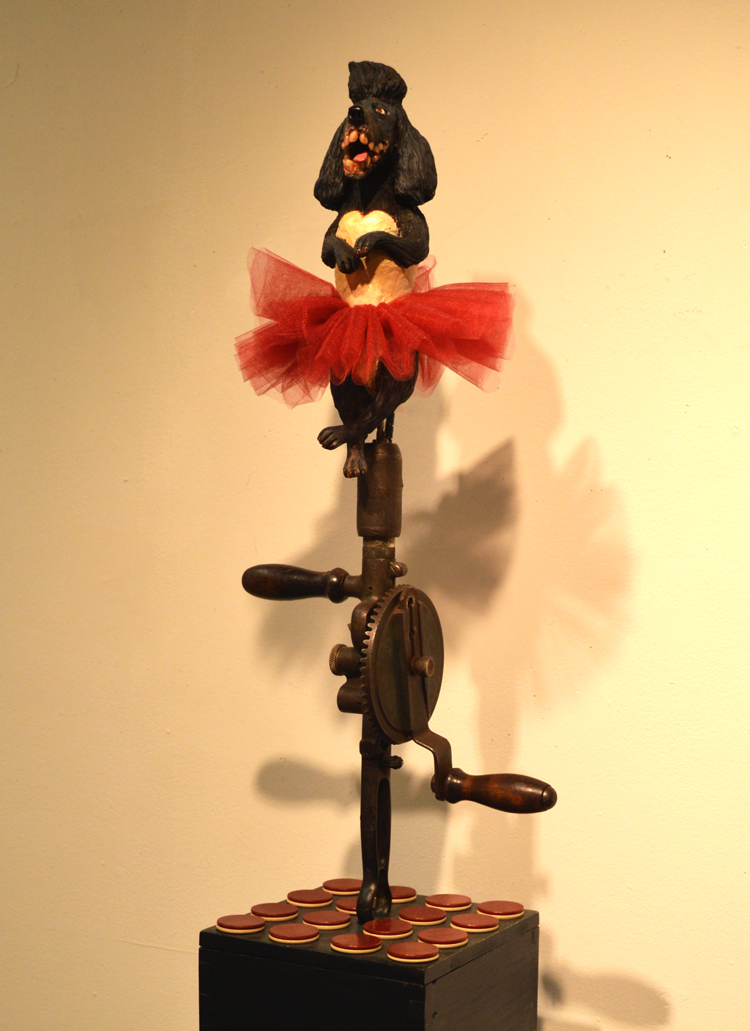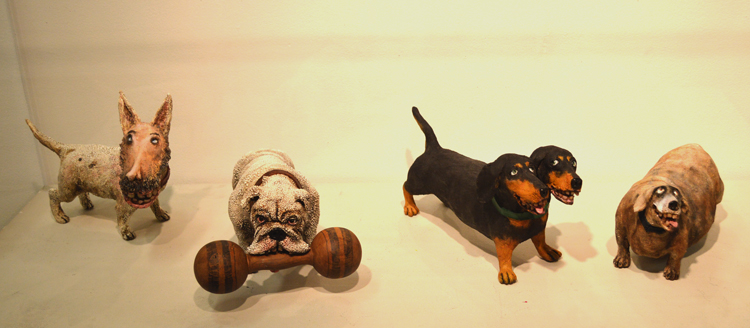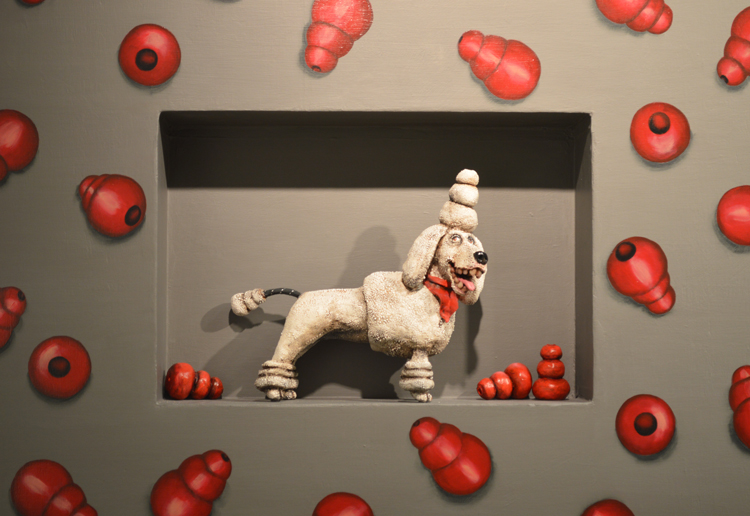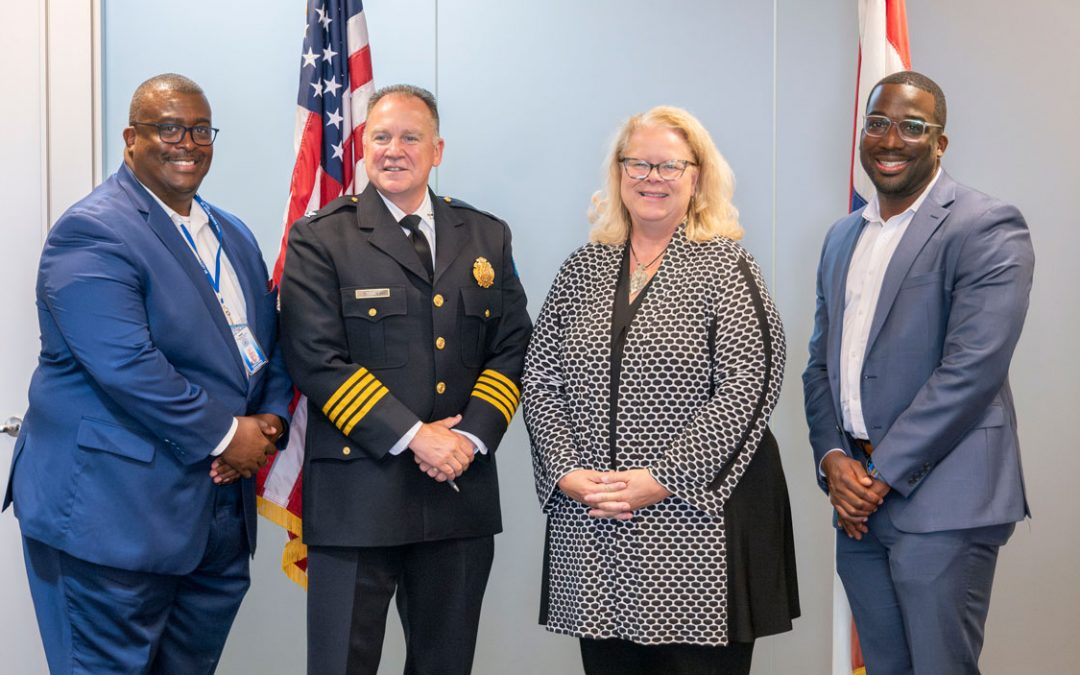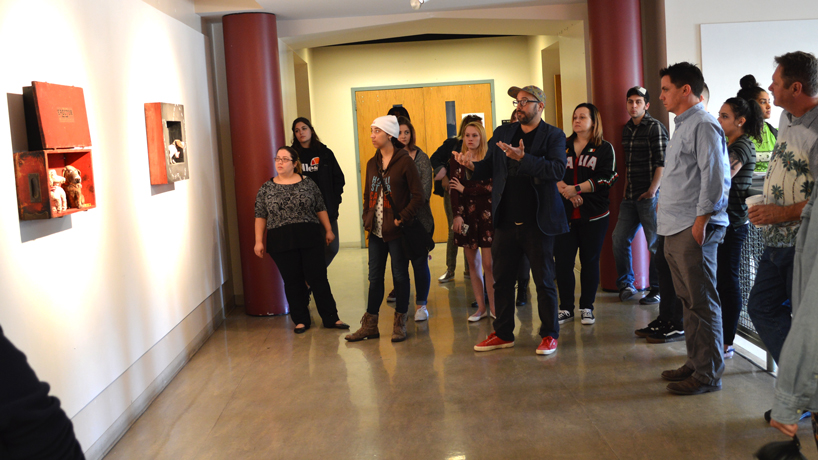
A closing reception for “Dog Show,” curated by UMSL faculty member Mike Behle, is set for 5 to 7 p.m. March 2 in the Fine Arts Building. On Feb. 23, UMSL students and faculty enjoyed a gallery talk with the artist, Steve Jones (light blue shirt). (Photos by Evie Hemphill)
A dog show is underway inside the Fine Arts Building at the University of Missouri–St. Louis, and it’s of a different breed.
Mostly ceramic, the canines comprising this particular show elicit more than applause. One of them is wearing a gas mask. Another has chewed away part of a couch. Still others appear as carnival sideshows. In every case, their faces seem full of expression.
“As fun and playful as the show is, it also gets you thinking about how these funny little forms carry with them personality and sort of function as surrogates for ourselves and the human condition,” says Mike Behle, an assistant teacher professor in UMSL’s Department of Art and Art History. “There’s that element of humor but also this quiet, sober kind of gravitas about Steve’s work.”
Behle is curator of this spring’s “Dog Show,” which presents a collection of Steve Jones’ artwork along the busy Gallery FAB corridor. The exhibition culminates with a closing reception from 5 to 7 p.m. Thursday in the same space.
“I thought the show would be a really successful one, and it has been,” says Behle, who studied alongside Jones as an undergrad years ago. “Our students have really enjoyed it.”
One of the most striking features that stands out to viewers is the mouth on many of the dogs.
Created using porcelain teeth that typically become the stuff of dentures, the mouths adds what Behle terms “an interesting tension” to the pieces.
“When you think about the mouth of the dog – whether it’s the tongue, the barking, the eating, the biting, whatever – the mouth is a big thing for dogs,” he says. “So that’s kind of a way to activate that.”
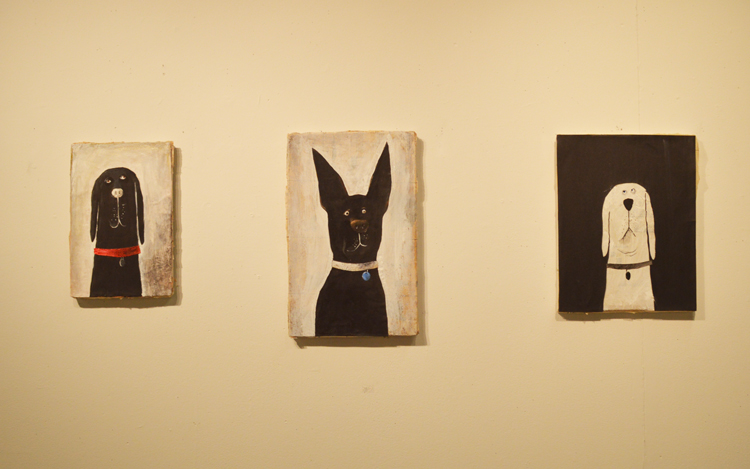
While most are three-dimensional pieces, there are some paintings in the mix as well, including this trio that the artist considered naming after himself, Behle and another college pal. “He didn’t end up doing that,” Behle says, “and I don’t know which would be which, but if I know Steve, and I do, that’s probably him in the center.”
Jones, who teaches art at a local middle school, presented a gallery talk to a group of Behle’s UMSL students Feb. 23.
The conversation touched on everything from the relationship of humans and dogs, to the various formats Jones selected for different pieces, to the fact that Jones grew up around dogs and horses – which have often informed his work.
Behle, himself a longtime dog person, points out that as humans pay attention to their fur-covered friends in the real world, they learn more about both the dogs and themselves. And “Dog Show” has a similar effect.
“Steve’s work embodies this idea of a four-legged mirror,” Behle says. “His clay dogs tell us about ourselves – our insecurities, moments of bravery, honesty and authenticities – and speak to the many facets of the human condition…. He creates moments of reflection.”

